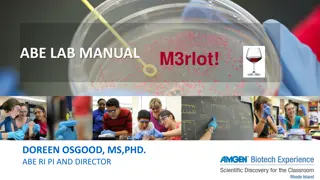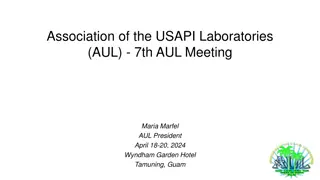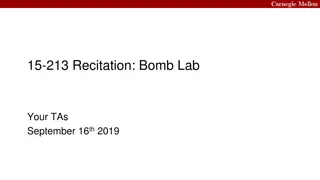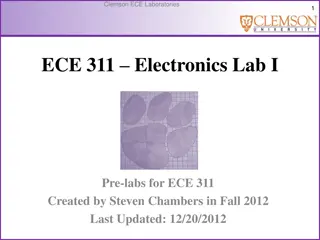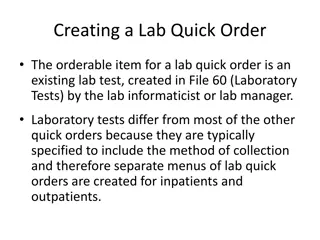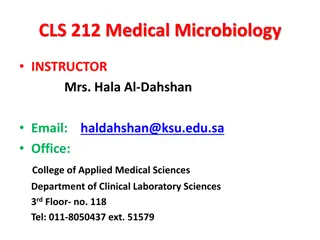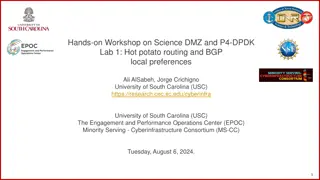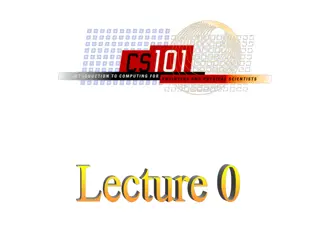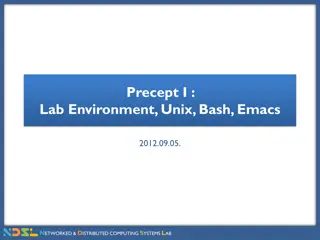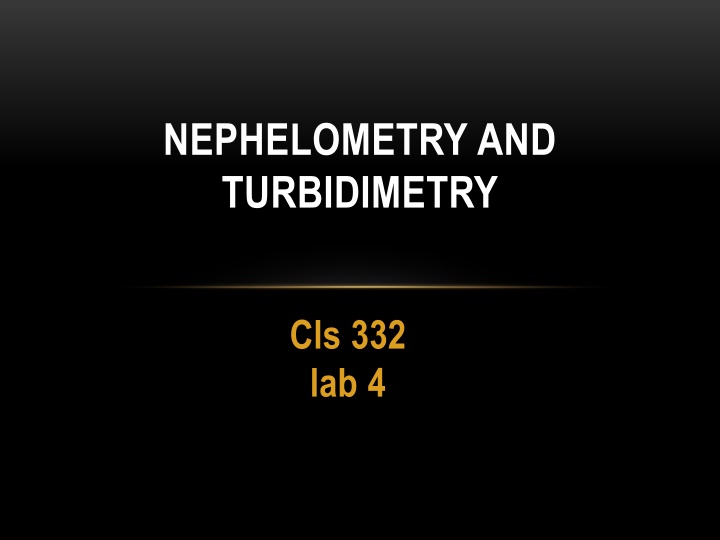
Nephelometry and Turbidimetry Analysis Overview
Learn about nephelometry and turbidimetry analysis, including the principles, instrumentation, clinical uses, and examples. Explore how incident radiant energy is scattered to measure the concentration of dispersed phases for various applications. Discover the sensitivity of nephelometry machines for dilute suspensions and the importance of controlling reactant concentrations in turbidity testing.
Download Presentation

Please find below an Image/Link to download the presentation.
The content on the website is provided AS IS for your information and personal use only. It may not be sold, licensed, or shared on other websites without obtaining consent from the author. If you encounter any issues during the download, it is possible that the publisher has removed the file from their server.
You are allowed to download the files provided on this website for personal or commercial use, subject to the condition that they are used lawfully. All files are the property of their respective owners.
The content on the website is provided AS IS for your information and personal use only. It may not be sold, licensed, or shared on other websites without obtaining consent from the author.
E N D
Presentation Transcript
NEPHELOMETRY AND TURBIDIMETRY Cls 332 lab 4
INTRODUCTION Turbid metric + nephlometeric analysis: When part of incident radiant energy is dissipated by absorption, reflection, and refraction, while the remainder is transmit light as a function of the concentration of the dispersed phase is the basis of turbid metric analysis
Nephlometer Turbidimeter Definition the measurement of the intensity of scattered light at right angles to the direction of the incident light as a function of the concentration of the dispersed phase ,It is most sensitive for very dilute suspensions (100 mg/L). Nephlometery machine Scattered light Light passing through a medium with dispersed particles, so the intensity of light transmitted is measured. Instrument used Type of light measured Arrangement of photometer measure the light scattered at right angle to the direction of the propagation of light from the source. It could be movable detectors which allow operator to vary the angle of detection Clinical uses Ag-Ab rxn, immunocomplex rxn,ppts, lipoprotein spectrophotometer Transmitted light made in the same direction as the propagation of the light from the source. Ag-Ab rxn, immunocomplex rxn,ppts, liver dis, protein in urine or CSF
INSTRUMENTATION: 1- light source: Tungsten its relatively low intensity makes it less useful for samples with low light scattering. Alternatives are: quartz halogen lamp, xenon lamp and laser which have higher intensities than tungsten lamp. 2-lens assembly: Light enter the sample holder through lens assembly.
3-there is provision for the insertion of filter between the sample and source of light(monochromator). 4- detector (photo cell): It is shielded to minimize interference from stray light. 5-Read out device: Light intensity is converted to an electrical signal by the detector .
EXAMPLE: The turbidity of a dilute barium sulphate suspension. The concentration of the reactants must be controlled by adding pure solid barium chloride of definite grain size. -NACL and HCL are added before the precipitation in order to inhibit the growth of microcrystal of barium sulphate -A glycerol ethanol solution helps to stabilise the turbidity. The reaction vessels is shaken gently in order to obtain a uniform particle size. Each vessel should be shaken at the same rate and the same number of times.
MEASURMENTS: 1-plug the instrument into ground outlet. 2- choose desirable scale from 0-10 starting with the highest conc. (for std 1=scale 10) 3- turn power switch on. 4-selecte desirable range by range selector at desirable position . 5- select filter required.
6- transfer your standards in the cleaned cell and place them in cell holder. 7- remove the standards. 8- fill the second cell with blank to set zero . 9- check the reading of the standards again. 10- measure your unkown. 11- draw calibration curve.
PRECAUTION: -Number and size of the particles should remain constant if repeated preparation are made -clean cell & filter - avoid air bubbles (high reading). -dilute sample if there is need. -prepare the blank ,standards, Sample at the same time.(to avoid ppt)
ADVANTAGES AND DISADVANTAGES : Advantages : rapidity of procedure and simplicity of the measurements. Disadvantages: lack of accuracy of the measurements.

